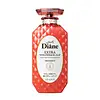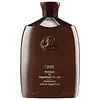What's inside
What's inside
 Key Ingredients
Key Ingredients

 Benefits
Benefits

 Concerns
Concerns

 Ingredients Side-by-side
Ingredients Side-by-side

Water
Skin ConditioningCetearyl Alcohol
EmollientEthylhexyl Palmitate
EmollientAsparagopsis Armata Extract
Skin ProtectingPropanediol
SolventGamma-Docosalactone
Skin ConditioningQuaternium-33
Glucose
HumectantButylene Glycol
HumectantGlucosyl Hesperidin
HumectantSorbitol
HumectantHydrolyzed Rice Protein
Skin ConditioningPrunus Domestica Seed Extract
EmollientGlycerylamidoethyl Methacrylate/Stearyl Methacrylate Copolymer
HumectantAscophyllum Nodosum Extract
Skin ConditioningSodium Hyaluronate
HumectantKeratin
Skin ConditioningPisum Sativum Sprout Extract
Skin ConditioningChamomilla Recutita Flower Extract
MaskingSpiraea Ulmaria Flower Extract
Skin ConditioningIsomalt
HumectantPolyquaternium-10
Polyquaternium-7
Hydrolyzed Collagen
EmollientHydrolyzed Silk
HumectantPCA Ethyl Cocoyl Arginate
MoisturisingAmodimethicone
Biotin
AntiseborrhoeicPouteria Sapota Seed Oil
EmollientSclerocarya Birrea Seed Oil
HumectantTheobroma Grandiflorum Seed Butter
Skin ConditioningMangifera Indica Seed Oil
EmollientPhytosteryl/Octyldodecyl Lauroyl Glutamate
Skin ConditioningUbiquinone
AntioxidantGlycine Soja Sterols
EmollientCeramide Ng
Skin ConditioningArgania Spinosa Kernel Oil
EmollientCeramide Ag
HumectantCeramide NP
Skin ConditioningCeramide AP
Skin ConditioningCeramide EOP
Skin ConditioningBis-Behenyl/Isostearyl/Phytosteryl Dimer Dilinoleyl Dimer Dilinoleate
EmollientChenopodium Quinoa Seed Oil
EmollientCarapa Guaianensis Seed Oil
Skin ConditioningAdansonia Digitata Seed Oil
EmollientDimethicone
EmollientSodium Lactate
Buffering1,2-Hexanediol
Skin ConditioningCholesterol
EmollientSalicylic Acid
MaskingO-Cymen-5-Ol
AntimicrobialGlyceryl Tri-Hydrogenated Rosinate
EmollientHydrogenated Lecithin
EmulsifyingPolyglyceryl-10 Laurate
Skin ConditioningSteartrimonium Chloride
PreservativeCetrimonium Chloride
AntimicrobialDicocodimonium Chloride
EmulsifyingQuaternium-18
Behentrimonium Chloride
PreservativeIsopropyl Alcohol
SolventGlycerin
HumectantPropylene Glycol
HumectantLactic Acid
BufferingTocopherol
AntioxidantDisodium EDTA
Phenoxyethanol
PreservativeParfum
MaskingCaramel
Cosmetic ColorantWater, Cetearyl Alcohol, Ethylhexyl Palmitate, Asparagopsis Armata Extract, Propanediol, Gamma-Docosalactone, Quaternium-33, Glucose, Butylene Glycol, Glucosyl Hesperidin, Sorbitol, Hydrolyzed Rice Protein, Prunus Domestica Seed Extract, Glycerylamidoethyl Methacrylate/Stearyl Methacrylate Copolymer, Ascophyllum Nodosum Extract, Sodium Hyaluronate, Keratin, Pisum Sativum Sprout Extract, Chamomilla Recutita Flower Extract, Spiraea Ulmaria Flower Extract, Isomalt, Polyquaternium-10, Polyquaternium-7, Hydrolyzed Collagen, Hydrolyzed Silk, PCA Ethyl Cocoyl Arginate, Amodimethicone, Biotin, Pouteria Sapota Seed Oil, Sclerocarya Birrea Seed Oil, Theobroma Grandiflorum Seed Butter, Mangifera Indica Seed Oil, Phytosteryl/Octyldodecyl Lauroyl Glutamate, Ubiquinone, Glycine Soja Sterols, Ceramide Ng, Argania Spinosa Kernel Oil, Ceramide Ag, Ceramide NP, Ceramide AP, Ceramide EOP, Bis-Behenyl/Isostearyl/Phytosteryl Dimer Dilinoleyl Dimer Dilinoleate, Chenopodium Quinoa Seed Oil, Carapa Guaianensis Seed Oil, Adansonia Digitata Seed Oil, Dimethicone, Sodium Lactate, 1,2-Hexanediol, Cholesterol, Salicylic Acid, O-Cymen-5-Ol, Glyceryl Tri-Hydrogenated Rosinate, Hydrogenated Lecithin, Polyglyceryl-10 Laurate, Steartrimonium Chloride, Cetrimonium Chloride, Dicocodimonium Chloride, Quaternium-18, Behentrimonium Chloride, Isopropyl Alcohol, Glycerin, Propylene Glycol, Lactic Acid, Tocopherol, Disodium EDTA, Phenoxyethanol, Parfum, Caramel
Water
Skin ConditioningDisodium Laureth Sulfosuccinate
CleansingSodium Lauroyl Sarcosinate
CleansingSodium Lauryl Sulfoacetate
CleansingCocamide Mea
EmulsifyingCocamidopropyl Hydroxysultaine
CleansingDecyl Glucoside
CleansingPolyglyceryl-3 Laurate
EmulsifyingSodium Lauroyl Lactylate
EmulsifyingCocoglucosides Hydroxypropyltrimonium Chloride
CleansingGlycerin
HumectantBehentrimonium Chloride
PreservativeRice Oil Glycereth-8 Esters
CleansingMethoxy PEG/PPG-7/3 Aminopropyl Dimethicone
Panthenol
Skin ConditioningHydrolyzed Vegetable Protein Pg-Propyl Silanetriol
Skin ConditioningSerenoa Serrulata Fruit Extract
Skin ConditioningLitchi Chinensis Pericarp Extract
Skin ConditioningHydrolyzed Lupine Protein
Skin ConditioningKaempferia Galanga Root Extract
Skin ConditioningLeontopodium Alpinum Extract
Skin ConditioningStyrax Benzoin Resin Extract
MaskingCitrullus Lanatus Fruit Extract
Skin ConditioningMoringa Oleifera Seed Extract
Skin ConditioningButylene Glycol
HumectantQuaternium-95
UV AbsorberHydrolyzed Keratin
HumectantKeratin
Skin ConditioningOctocrylene
UV AbsorberButyl Methoxydibenzoylmethane
UV AbsorberInulin Lauryl Carbamate
Emulsion StabilisingCaprylic/Capric Triglyceride
MaskingSucrose Laurate
EmollientPropanediol
SolventCitric Acid
BufferingPEG-150 Distearate
EmulsifyingDisodium EDTA
BHT
AntioxidantPhenoxyethanol
PreservativePotassium Sorbate
PreservativeSodium Benzoate
MaskingChlorphenesin
AntimicrobialMethylisothiazolinone
PreservativeParfum
MaskingHexyl Cinnamal
PerfumingLimonene
PerfumingWater, Disodium Laureth Sulfosuccinate, Sodium Lauroyl Sarcosinate, Sodium Lauryl Sulfoacetate, Cocamide Mea, Cocamidopropyl Hydroxysultaine, Decyl Glucoside, Polyglyceryl-3 Laurate, Sodium Lauroyl Lactylate, Cocoglucosides Hydroxypropyltrimonium Chloride, Glycerin, Behentrimonium Chloride, Rice Oil Glycereth-8 Esters, Methoxy PEG/PPG-7/3 Aminopropyl Dimethicone, Panthenol, Hydrolyzed Vegetable Protein Pg-Propyl Silanetriol, Serenoa Serrulata Fruit Extract, Litchi Chinensis Pericarp Extract, Hydrolyzed Lupine Protein, Kaempferia Galanga Root Extract, Leontopodium Alpinum Extract, Styrax Benzoin Resin Extract, Citrullus Lanatus Fruit Extract, Moringa Oleifera Seed Extract, Butylene Glycol, Quaternium-95, Hydrolyzed Keratin, Keratin, Octocrylene, Butyl Methoxydibenzoylmethane, Inulin Lauryl Carbamate, Caprylic/Capric Triglyceride, Sucrose Laurate, Propanediol, Citric Acid, PEG-150 Distearate, Disodium EDTA, BHT, Phenoxyethanol, Potassium Sorbate, Sodium Benzoate, Chlorphenesin, Methylisothiazolinone, Parfum, Hexyl Cinnamal, Limonene
Alternatives
Ingredients Explained
These ingredients are found in both products.
Ingredients higher up in an ingredient list are typically present in a larger amount.
This ingredient is a preservative and often used for it's anti-static properties. You'll most likely see this ingredient in hair conditioners.
It does not cause irritation or sensitization in leave-on products at 1-5%.
Butylene Glycol (or BG) is used within cosmetic products for a few different reasons:
Overall, Butylene Glycol is a safe and well-rounded ingredient that works well with other ingredients.
Though this ingredient works well with most skin types, some people with sensitive skin may experience a reaction such as allergic rashes, closed comedones, or itchiness.
Learn more about Butylene GlycolDisodium EDTA plays a role in making products more stable by aiding other preservatives.
It is a chelating agent, meaning it neutralizes metal ions that may be found in a product.
Disodium EDTA is a salt of edetic acid and is found to be safe in cosmetic ingredients.
Learn more about Disodium EDTAGlycerin is already naturally found in your skin. It helps moisturize and protect your skin.
A study from 2016 found glycerin to be more effective as a humectant than AHAs and hyaluronic acid.
As a humectant, it helps the skin stay hydrated by pulling moisture to your skin. The low molecular weight of glycerin allows it to pull moisture into the deeper layers of your skin.
Hydrated skin improves your skin barrier; Your skin barrier helps protect against irritants and bacteria.
Glycerin has also been found to have antimicrobial and antiviral properties. Due to these properties, glycerin is often used in wound and burn treatments.
In cosmetics, glycerin is usually derived from plants such as soybean or palm. However, it can also be sourced from animals, such as tallow or animal fat.
This ingredient is organic, colorless, odorless, and non-toxic.
Glycerin is the name for this ingredient in American English. British English uses Glycerol/Glycerine.
Learn more about GlycerinKeratin is a protein naturally found in our hair and skin.
In haircare, it has been shown to seal broken cuticles. This can help prevent breakage and split ends.
Parfum is a catch-all term for an ingredient or more that is used to give a scent to products.
Also called "fragrance", this ingredient can be a blend of hundreds of chemicals or plant oils. This means every product with "fragrance" or "parfum" in the ingredients list is a different mixture.
For instance, Habanolide is a proprietary trade name for a specific aroma chemical. When used as a fragrance ingredient in cosmetics, most aroma chemicals fall under the broad labeling category of “FRAGRANCE” or “PARFUM” according to EU and US regulations.
The term 'parfum' or 'fragrance' is not regulated in many countries. In many cases, it is up to the brand to define this term.
For instance, many brands choose to label themselves as "fragrance-free" because they are not using synthetic fragrances. However, their products may still contain ingredients such as essential oils that are considered a fragrance by INCI standards.
One example is Calendula flower extract. Calendula is an essential oil that still imparts a scent or 'fragrance'.
Depending on the blend, the ingredients in the mixture can cause allergies and sensitivities on the skin. Some ingredients that are known EU allergens include linalool and citronellol.
Parfum can also be used to mask or cover an unpleasant scent.
The bottom line is: not all fragrances/parfum/ingredients are created equally. If you are worried about fragrances, we recommend taking a closer look at an ingredient. And of course, we always recommend speaking with a professional.
Learn more about ParfumPhenoxyethanol is a preservative that has germicide, antimicrobial, and aromatic properties. Studies show that phenoxyethanol can prevent microbial growth. By itself, it has a scent that is similar to that of a rose.
It's often used in formulations along with Caprylyl Glycol to preserve the shelf life of products.
Propanediol is an all-star ingredient. It softens, hydrates, and smooths the skin.
It’s often used to:
Propanediol is not likely to cause sensitivity and considered safe to use. It is derived from corn or petroleum with a clear color and no scent.
Learn more about PropanediolWater. It's the most common cosmetic ingredient of all. You'll usually see it at the top of ingredient lists, meaning that it makes up the largest part of the product.
So why is it so popular? Water most often acts as a solvent - this means that it helps dissolve other ingredients into the formulation.
You'll also recognize water as that liquid we all need to stay alive. If you see this, drink a glass of water. Stay hydrated!
Learn more about Water